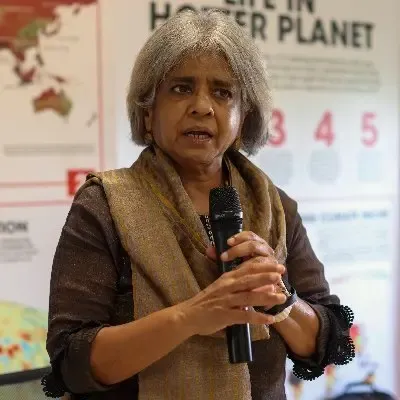Will Developing Nations Be Left Behind in the Green Economy Race?

Synopsis
Key Takeaways
- Developing countries risk being marginalized in the green economy transition.
- Equitable trade frameworks are necessary for value addition.
- Local manufacturing can enhance economic resilience.
- Global South policies should address historical inequities.
- Collaboration is vital for clean technology advancement.
New Delhi, Nov 11 (NationPress) Are developing nations at risk of lagging in the transition to a new, sustainable economy? This pressing concern is highlighted in a series of recent discussion papers from the Centre for Science and Environment (CSE), based in New Delhi, coinciding with the commencement of the UN’s 30th Conference of Parties (COP) in Belem, Brazil, during a time of significant geopolitical turbulence that threatens climate ambitions.
Titled 'Towards a New Green World', the CSE paper series emphasizes the importance of integrating economic resilience, value addition, and green industrialization into the climate agenda for developing nations.
During the launch, CSE Director General Sunita Narain remarked: “Inclusive and affordable development is essential for fostering economic resilience, which in turn aids in the fight against climate change.”
“For countries to have a stake in the green transition, domestic manufacturing and job creation are vital. We must also reconfigure global trade and finance frameworks to support localization and value addition,” she added.
This series focuses on three key areas of the green transition: agriculture and forest commodities, critical minerals, and clean technology and manufacturing. It presents a perspective from the Global South on how these nations can engage and thrive in the emerging green economy.
Developing countries are confronted with a significant challenge: they provide essential resources to the global market yet capture a minimal share of the value generated. From raw cocoa and copper to lithium and solar cells, the current green transition mirrors historical patterns of extraction and dependence.
According to Avantika Goswami, climate change program manager at CSE: “The global green transition risks perpetuating old inequalities under a seemingly climate-friendly guise unless the Global South is empowered to capture more value, diversify its economies, and influence the governance of emerging green sectors.”
“Rethinking the climate agenda for the Global South is imperative. Advocating for decarbonization without ensuring economic resilience is no longer a feasible strategy,” she asserted.
In the realm of agriculture and forest products, developing nations remain ensnared in a low-value export cycle, selling raw materials and reaping minimal rewards. For example, Ivory Coast and Ghana produce over 50% of the world’s cocoa beans but receive a mere 6.2% of the total export revenue from value-added goods like chocolate and cocoa powder.
In stark contrast, manufacturers and retailers in Global North countries claim nearly 80-90% of the profit margin from a chocolate bar.
The paper advocates for a “shift from raw exports to processing and diversification as essential.”
As for critical minerals, the Global South possesses the majority of the world’s reserves vital for energy transition, yet it captures a small fraction of the value from refining and production.
Goswami notes: “These countries remain vulnerable to commodity price fluctuations, balance-of-payments issues, and geopolitical risks.”
The report examines the policies and strategic plans of Chile, Indonesia, and Congo regarding critical minerals, offering principles focused on equity and justice within the climate-trade-development framework.
When it comes to clean technology manufacturing, the sector is predominantly concentrated in China, the EU, and the US, leaving Latin America, Africa, and Southeast Asia with under 5% of production value.
Meanwhile, the Global South faces the dual challenge of decarbonizing while also industrializing to support their growing economies.
Structural imbalances continue to exist: developing nations primarily assemble products but rely on imported, high-value components.
This paper explores how these countries can advance green industrialization by enhancing clean tech manufacturing capabilities, even amid China's dominance, limited local capacities, and unequal global trade participation.
Utilizing case studies from China, India, Indonesia, and Mexico, it highlights critical insights from their clean technology experiences, advocating for renewed industrial policies, South-South collaboration, and global regulatory reforms to foster resilient economies.
The three papers provide preliminary pathways for developing countries to capture more value, increase revenue, and emerge as key players in the new green economy, essential for addressing climate change.
As Narain emphasizes: “The future green economy must not replicate the inequalities of the past. The Global South deserves a world that is not only greener but also fairer, with economic resilience intertwined with climate action.”









